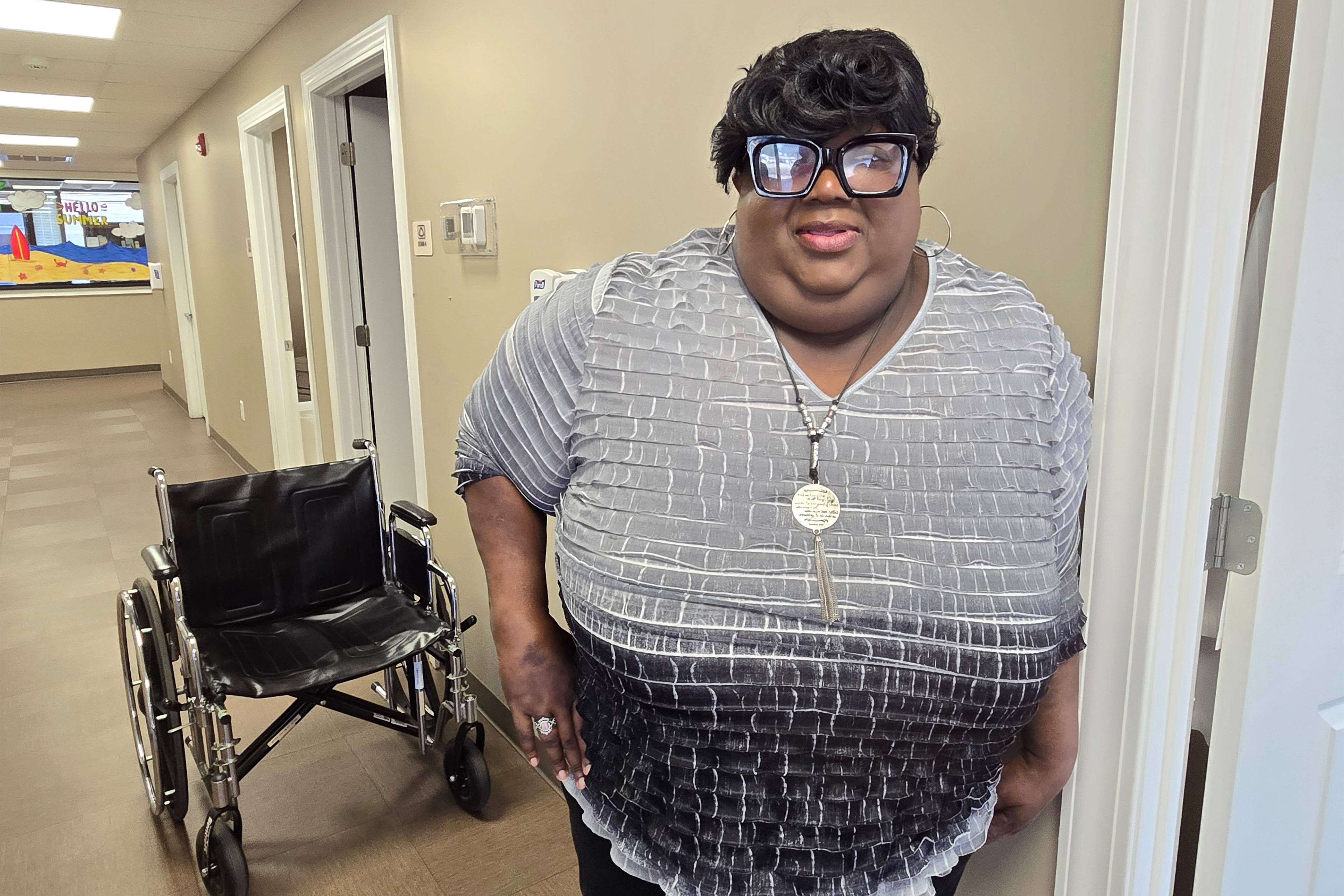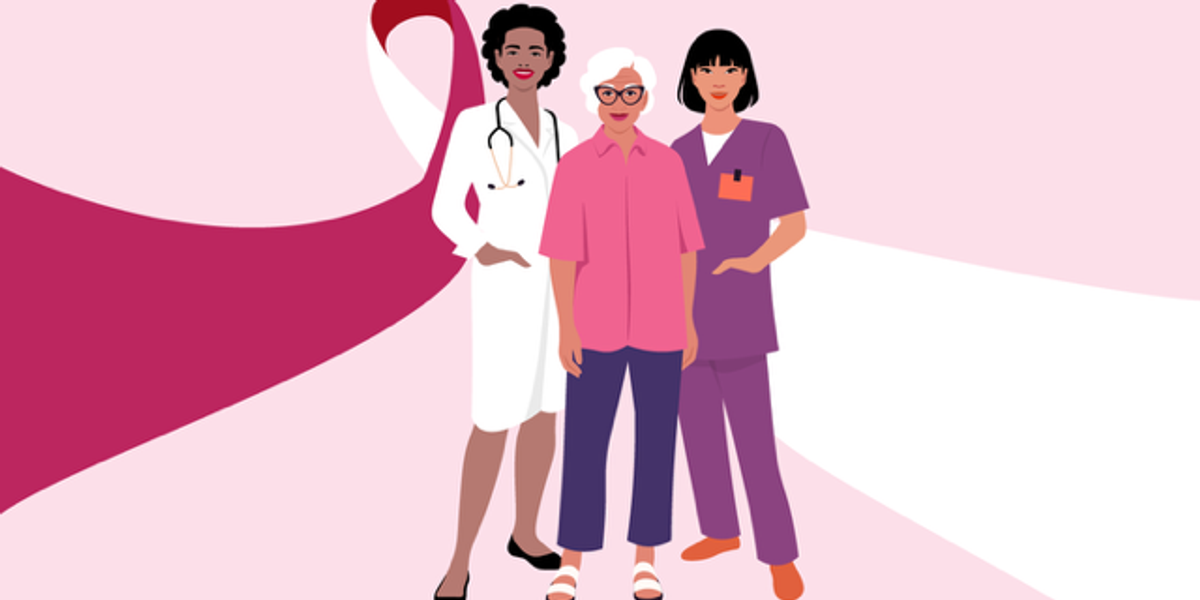Black women are less likely to be diagnosed with ovarian cancer than white women, but are more likely to die from it. A lack of access to quality care and genetic testing, as well as late diagnosis, may be contributing factors.
The American Cancer Society estimates there will be 20,890 newly diagnosed cases of ovarian cancer in 2025, and 12,730 women will die from the disease. An estimated one woman in 91 will develop ovarian cancer during her lifetime.
According to the Ovarian Cancer Research Alliance, the condition is most frequently diagnosed in women between the ages of 55 and 64.
Ovarian Cancer By the Numbers
When one is diagnosed and treated in the earliest stages, the five-year survival rate is over 90 percent. Due to ovarian cancer’s non-specific symptoms and lack of early detection tests, only 20 percent of all cases are diagnosed at this early stage. If caught in stage III or higher, the survival rate can be as low as 30.6 percent.
Due to the nature of the disease, each woman diagnosed with ovarian cancer has a different profile, and it is impossible to provide a general prognosis. The five-year ovarian cancer survival rate for white women is 50.6%; in Black patients, it’s 43.2%.
How Ovarian Cancer Impacts Black Women
The journal Obstetrics & Gynecology Health Disparities in Ovarian Care did a deep dive into the differences between Black, white, Asian, and Native American populations, Hispanic populations, when it came to diagnosis, care, and mortality. They looked at several years, going back to 1985.
Black patients overall and any other patient with a low socioeconomic background had worse outcomes.
“Black patients had 17–18% worse survival compared with White patients. Potential explanations include earlier age and later stage at diagnosis and disparities across the entire care continuum of ovarian cancer: diagnosis, treatment, and precision testing.”
Other factors that impacted treatment, according to this literature review, included the type of insurance the patient had. If it is non-private, the patient is less likely to have received the National Comprehensive Cancer Network guideline-concordant ovarian cancer treatment. This resulted in a 10% increase in the patient’s mortality risk. Non-private insurance also impacts access to genetic testing.
If patients lived in rural areas, who didn’t want to travel, or were treated in a lower volume hospital by a surgeon doing fewer surgeries, they received 16-31% NCCN guideline-concordant ovarian cancer treatment.
Bottom line: it is not as simple as a late diagnosis. It is who is treating us, and where we are treated. And if we are getting the correct protocols.
Who is at Risk For Ovarian Cancer?
According to the Ovarian Research Alliance, about 25% of ovarian cancer cases diagnosed are hereditary. And they can be primarily traced to BRCA-1 and BRCA-2 gene mutations (Black women can also have them). The connection is usually a history of breast cancer.
Other risk factors include:
- Lynch syndrome, also known as hereditary nonpolyposis colorectal cancer
- Family history of ovarian, breast, uterine, or colorectal cancer.
- A personal history of cancer or endometriosis
- Early menstruation, no childbirth, first childbirth after 30, late menopause, no oral contraceptives, or infertility increase the risk.
- HRT: Long-term use increases risk, especially with combined estrogen and progestin.
- Obesity is associated with a higher ovarian cancer risk, especially post-menopause.
The American Cancer Society Cancer Facts & Figures Report states, “Some women at high risk because of a strong family history or inherited genetic mutations may consider preventive surgery to remove both ovaries and fallopian tubes (prophylactic bilateral salpingo-oophorectomy), which greatly reduces risk.”
What is Ovarian Cancer?
Ovarian cancer is a disease in which malignant or cancerous cells are found in the ovaries. An ovary is one of two small, almond-shaped organs located on each side of the uterus that store eggs or germ cells and produce female hormones estrogen and progesterone.
According to The American Cancer Society, however, the disease was previously believed to start only in the cells of the ovaries. But ovarian cancer may also begin in the fallopian tubes.
Types of Ovarian Cancer
Epithelial Ovarian Cancer
The majority of ovarian cancers are categorized here (85-90%) and can start in the cells of the fallopian tube or the ovaries. The cells are further classified based on genetic analysis into the following categories:
- High-grade serous carcinoma (This is the most common type.)
- Low-grade serous carcinoma
- Endometrioid carcinoma
- Clear cell carcinoma
- Mucinous carcinoma
Primary Peritoneal Carcinoma
This is a rare cancer that is related to epithelial ovarian cancer. However, it may have spread to the abdomen.
Fallopian Tube Cancer
Fallopian tube cancer is similar to epithelial ovarian cancer and often spreads to the ovary and peritoneum.
Ovarian Sex Cord-Stromal Tumors
Ovarian sex cord-stromal tumors (SCSTs) are a group of tumors that originate either from the sex cord or stromal cells:
- Sex cord cells are a type of epithelial cell that eventually develop into ovaries (in females) and testes (in males).
- Stromal cells form the connective tissue that gives the ovaries structure.
Ovarian Germ Cell Tumors
Most ovarian germ cell tumors are benign, but some are cancerous and may be life-threatening. Less than 2% of ovarian cancers are germ cell tumors.
- Dysgerminoma is rare; it is the most common ovarian germ cell cancer.
What Are the Symptoms of Ovarian Cancer?
Ovarian cancer is difficult to detect, especially in the early stages. This is partly because these two small, almond-shaped organs are deep within the abdominal cavity, one on each side of the uterus.
According to the Mayo Clinic, these are some of the potential signs and symptoms of ovarian cancer:
- Quickly feeling full when eating
- Abdominal bloating or swelling
- Weight loss
- Feeling the need to urinate urgently or often
- Fatigue
- Discomfort in the pelvic area
- Back pain
- Changes in bowel habits, such as constipation
Make an appointment with your HCP if your symptoms are persistent.
Getting Evaluated By Your HCP
Your HCP may need to perform several tests before there is a conclusive diagnosis. They may include:
- A pelvic exam
- Blood tests. The most common tumor marker is a blood test called the CA-125.
- Genetic tests
- Surgery
If Your Results Come Back Positive
Consult a gynecologic oncologist immediately. They may want to review your current test and order additional ones, along with the results. However, the only way to more accurately confirm ovarian cancer is with a biopsy, a procedure in which the doctor takes a sample of the tumor and examines it under a microscope.
Getting Diagnosed
Make the most of your appointment. Come with some questions ready after the initial shock has worn off. Or bring a supportive wingperson with you. A significant other, sister, BFF, or work friend, let them ask the questions you have scribbled in your notebook. But we’ve got a cheat sheet down below to get you started, and you can add more from here.
- What type of ovarian cancer do I have?
- Has my cancer spread beyond the ovaries?
- What is the cancer’s stage (extent), and what does that mean?
- Will I need other tests before we can decide on treatment?
- Will I be able to have children after my treatment?
- Should I think about genetic testing?
- What are my clinical trial options?
- This is overwhelming. Where can I find support?
Partner With Your HCP
After your diagnosis, you’ll partner with your oncologist to choose a customized treatment plan that works for you. The treatment will vary based on the stage of the disease, your age, and your health condition. The ACS points out that most ovarian cancer patients may require surgery. But depending on the type of ovarian cancer and how advanced it is, you might need other types of treatment as well, either before or after surgery, or sometimes both.
Treatment Options May Include:
- Chemotherapy
- Radiation
- Targeted Drug Therapy
- Hormone Therapy
- Immonotherapy
Consider Genetic Testing
In an article in Nature, Sophia George explores solutions for why Black women have lower survival rates and higher rates of recurrence. In examining data from the NCI, she noticed that we have higher rates of rarer cancers.
“Black women are more likely to have germ-cell and stromal-cell tumours, and less likely to have epithelial ovarian cancers,” she wrote. Despite these differences, new approaches to clinical care — including genomic medicine — are underutilized in this population. ”
Then there are new treatments like PARP inhibitors, but when only 1.6% participants in the trial are, George says, “the efficacy of PARP inhibitors in Black women remains poorly characterized.”
Finally, she notes that Black patients are less likely to have their tumors analyzed. “This exacerbates disparities in the treatment that they receive and limits cancer-prevention opportunities in family members.”
Using Black women’s poorer response to platinum-based chemotherapy as an example, George believes that genetics may play a role. She argues that there is a similar type of inherited breast and ovarian gene variant in West African, Black American, and white women.
“But certain subpopulations of Black women3 experience hereditary breast and ovarian cancer syndromes at rates comparable to or greater than those seen in the Ashkenazi Jewish population, which has considerably higher rates of these cancers than the global average.”
We do know some families within our communities that have been hit hard by breast and ovarian cancers. They could benefit from genetic testing.
Five Preventive Strategies to Fight Ovarian Cancer
Genetic testing also provides insights that enable individuals to identify preventive measures they can take to reduce their risk of ovarian cancer. Here are five that the ORA suggests:
- Using oral contraception for five or more years can reduce ovarian cancer risk by 50%.
- Multiple pregnancies or your first full-term birth by age 26 reduces your risk, and breastfeeding does, too.
- Removal of your Fallopian tubes (Bilateral Salpingectomy). It reduces the risk of cancer forming in the fallopian tubes while preserving fertility with the help of IVF.
- Removal of Fallopian Tubes and Ovaries Bilateral salpingo-oophorectomy significantly reduces risk. There is a slight chance you can still get a rare kind of ovarian cancer. Especially beneficial when performed by age 35-40 for women with BRCA1 mutations or by age 40-45 for those with BRCA2 mutations.
- Hysterectomy and Tubal Ligation: Hysterectomy may reduce the risk of ovarian cancer by 33%, and tubal ligation by up to 67%.
Resources:
American Cancer Society: Types of Ovarian Cancer
Ovarian Research Alliance: Prevention and Risks













![Pumpkin Pie Protein Bites [vegan + gluten-free]](https://i0.wp.com/healthyhelperkaila.com/wp-content/uploads/2025/09/PumpkinProteinBites7.png?fit=800%2C800&ssl=1)





 English (US) ·
English (US) ·